ANIMALS
30 Most Beautiful Animals on the Planet
Published
1 year agoon
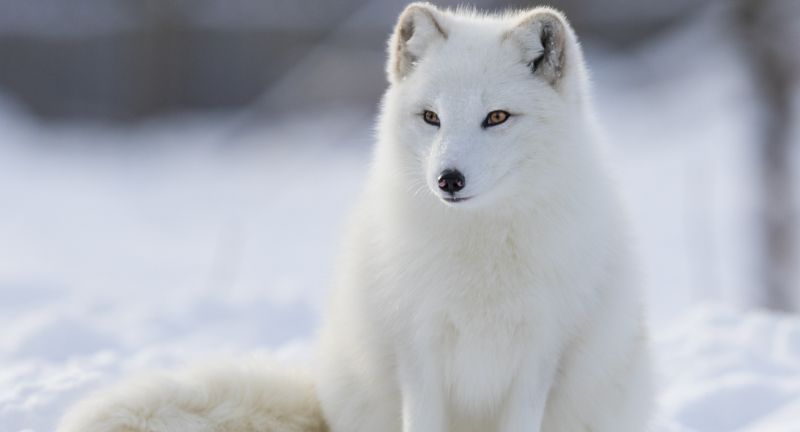
Shutterstock
Our planet is home to an astonishing array of animals, each with unique features that set them apart as some of the most beautiful creatures on Earth. From the majestic plumage of exotic birds to the intriguing patterns of aquatic life, the natural world offers an endless showcase of beauty that captivates and inspires. We dive into the allure of 30 such animals, highlighting their distinctive characteristics and the habitats they adorn. From the elegance of the Siberian Husky’s gaze to the mystical presence of the Narwhal in icy waters, each entry celebrates the diversity and splendor of the animal kingdom, reminding us of the wonders our world holds.
Peacock

Shutterstock
The peacock is one of the most visually stunning birds in the world, celebrated for its expansive and colorful tail feathers. These feathers display a mesmerizing array of iridescent hues, shimmering in the sunlight to attract mates and deter predators. The males, or peacocks, use their splendid tails in elaborate courtship rituals, fanning them out to showcase their beauty. The vibrant colors and intricate patterns of the peacock’s plumage have made it a symbol of beauty and pride across many cultures.
Bengal Tiger
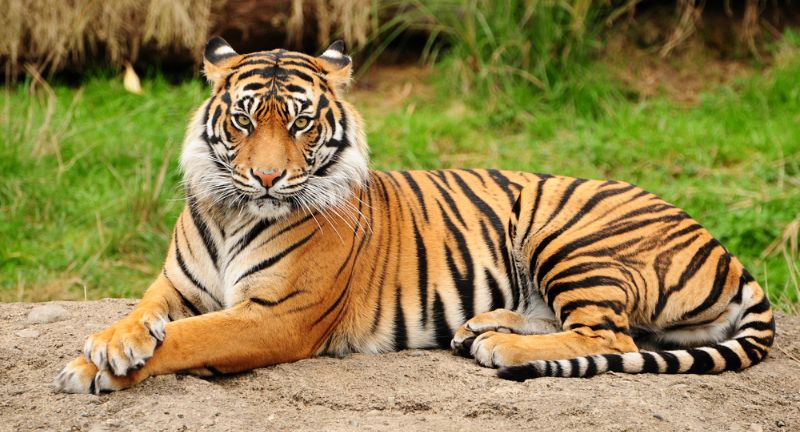
Shutterstock
The Bengal tiger, with its striking orange coat marked by dark black stripes, stands as a powerful symbol of beauty and strength. This majestic animal is native to the Indian subcontinent and is known for its agility and prowess. The contrast between its vibrant fur and the shadows of the forest it inhabits creates a captivating sight. The Bengal tiger not only plays a crucial role in the ecosystem as a top predator but also holds significant cultural importance in various traditions and folklore.
Blue Morpho Butterfly
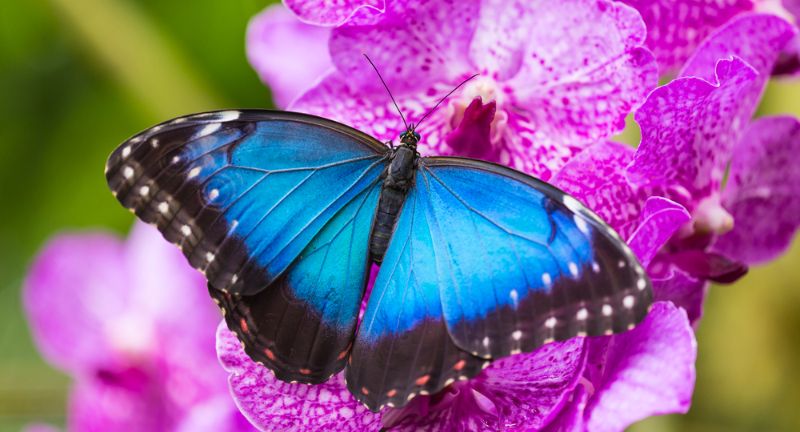
The Blue Morpho Butterfly is famed for its brilliant blue wings, which are among the most striking in the insect world. This vibrant coloration is not the result of pigment but rather the microscopic scales on their wings, which reflect light in a way that creates a vivid blue appearance. They are primarily found in the tropical forests of Latin America, fluttering through the undergrowth where their iridescent wings flash in the dappled sunlight. The Blue Morpho’s beauty is not just skin deep; it plays a vital role in the ecosystem as a pollinator and as part of the food chain.
Mandarin Fish
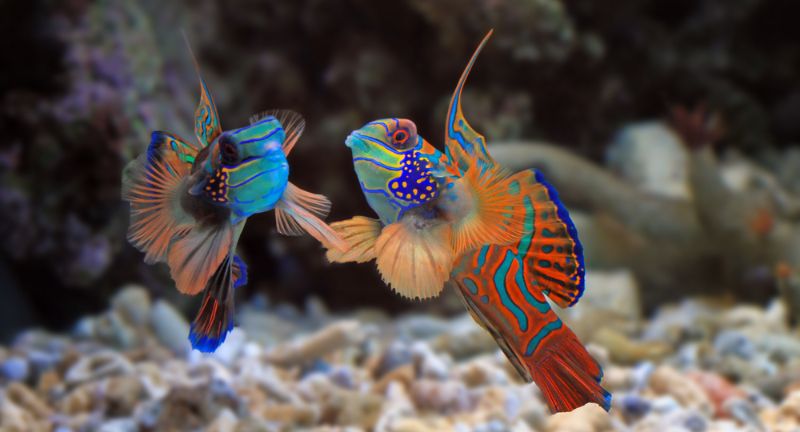
Shutterstock
The Mandarin Fish is celebrated for its dazzling colors and patterns, making it one of the most beautiful fish in the ocean. Its body is adorned with a mix of vibrant oranges, blues, and greens, creating a stunning visual effect that resembles a moving painting. Found in the Pacific Ocean, this small fish prefers the shelter of coral reefs, where it feeds on small invertebrates. The Mandarin Fish’s unique appearance is a perfect example of the breathtaking beauty that lies beneath the ocean’s surface.
Arabian Horse
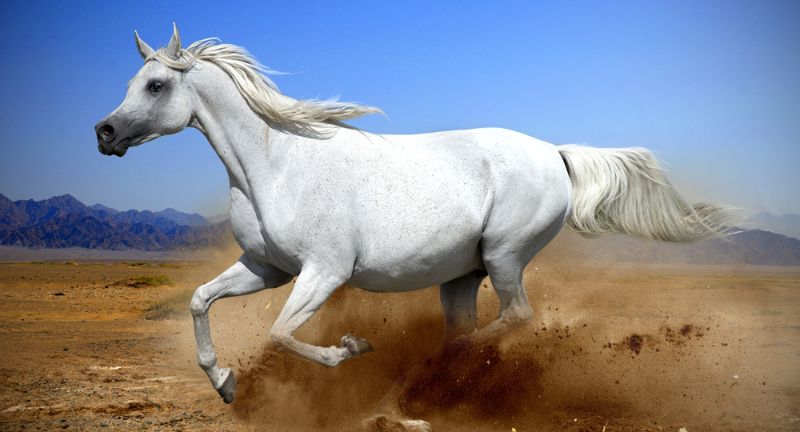
Shutterstock
The Arabian Horse is renowned worldwide for its elegance, strength, and endurance. Its sleek coat, which can come in a variety of colors, complements its finely chiseled head and high tail carriage. Originating from the Arabian Peninsula, this breed is one of the oldest and most recognizable horse breeds in the world. The Arabian Horse has not only influenced many other horse breeds but also holds a special place in human history and culture, symbolizing wealth, status, and pure beauty.
Scarlet Macaw
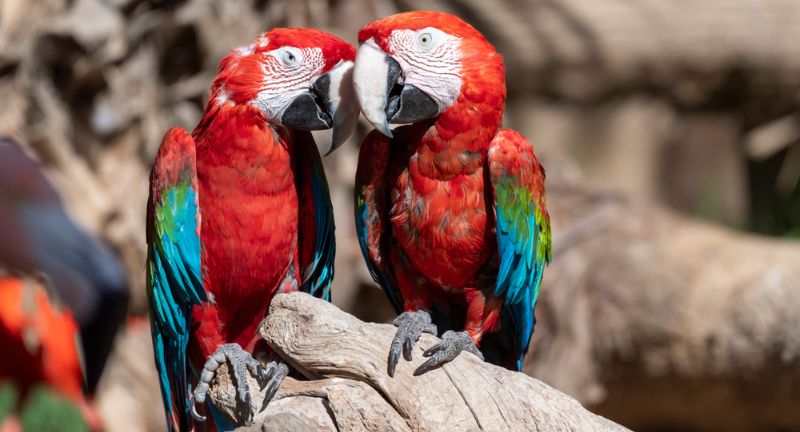
Shutterstock
The Scarlet Macaw is a large, brightly colored parrot native to the humid evergreen forests of Central and South America. Its feathers are a striking combination of red, yellow, and blue, which stand out against the green backdrop of its habitat. These birds are not only beautiful but also highly intelligent and social, capable of mimicking human speech. The Scarlet Macaw’s vibrant plumage and charismatic nature have made it a favorite among bird enthusiasts and a symbol of the tropical forests it calls home.
Fennec Fox
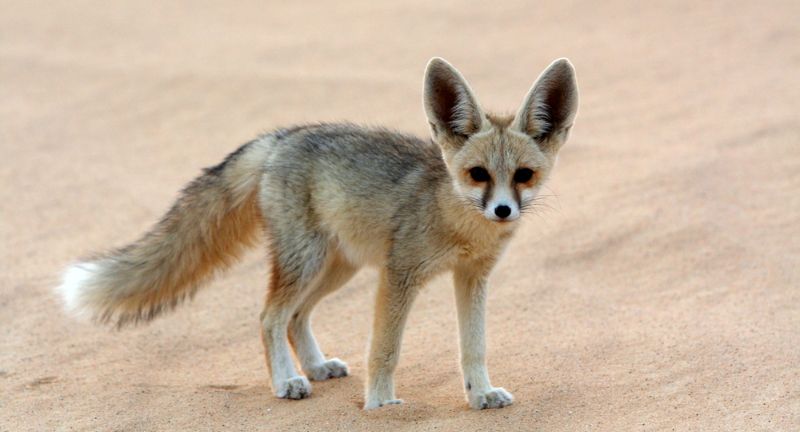
Shutterstock
The Fennec Fox, native to the Sahara Desert and other parts of North Africa, is distinguished by its large, bat-like ears, which help to dissipate heat. This small nocturnal animal has a creamy coat and adorable features, making it one of the most endearing creatures in the animal kingdom. Its ears not only aid in thermoregulation but also enhance its hearing, allowing it to detect prey underground. The Fennec Fox’s charming appearance and adaptive behaviors to desert life underscore the incredible diversity of life on our planet.
Snow Leopard
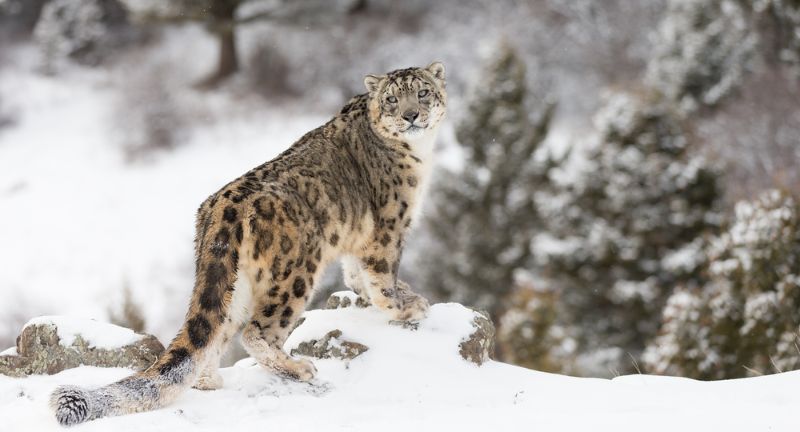
Shutterstock
The Snow Leopard is an elusive and majestic animal, known for its stunning coat that blends perfectly with the snowy and rocky landscapes of Central and South Asia. This big cat’s thick fur, marked with black rosettes and spots, provides not only camouflage but also insulation against the cold. Snow Leopards are solitary creatures, adept at navigating their rugged, mountainous habitat. Their beauty and grace, combined with their mysterious nature, make them a symbol of the wild’s untamed essence.
Red Panda
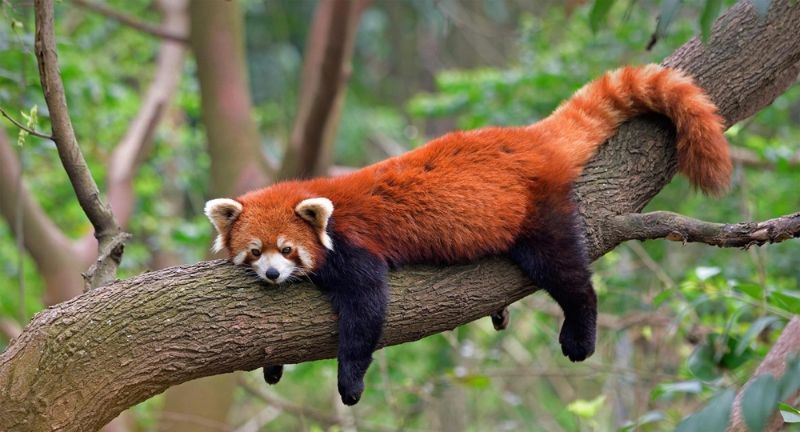
Shutterstock
The Red Panda is a small mammal native to the eastern Himalayas and southwestern China. With its reddish-brown fur, fluffy tail, and wistful face, it captures the hearts of all who see it. The Red Panda uses its tail as a blanket to keep warm in the cold mountainous regions it inhabits. Despite its name, it is not closely related to the giant panda but shares the bamboo forest habitat and has a similar diet, primarily consisting of bamboo. The Red Panda’s adorable demeanor and unique features make it a beloved species, though it faces threats from habitat loss and fragmentation.
Quetzal
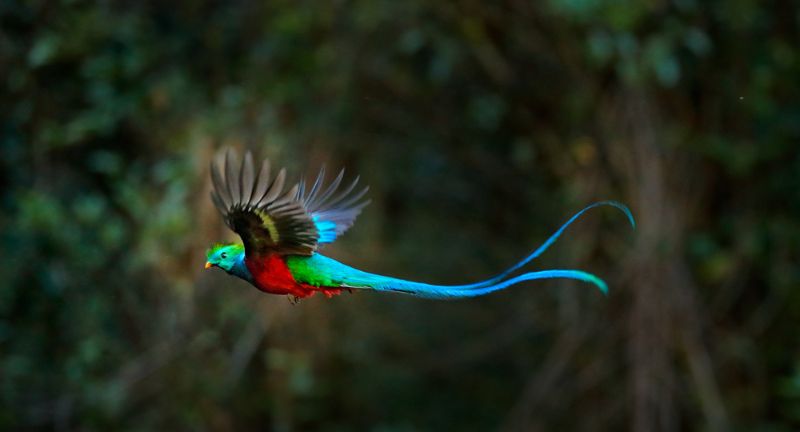
Shutterstock
The Quetzal is a vibrant bird found in the cloud forests of Central America, most notably Guatemala, where it is also the national bird. Its brilliant green plumage, which can shimmer with a range of colors from green to blue to gold depending on the light, and its striking red breast make it a breathtaking sight. The male Quetzal is particularly famous for its long tail feathers, which can be over a meter long and are used in mating displays. The Quetzal plays a significant role in Mesoamerican mythologies and is considered a symbol of freedom and wealth.
Chameleon
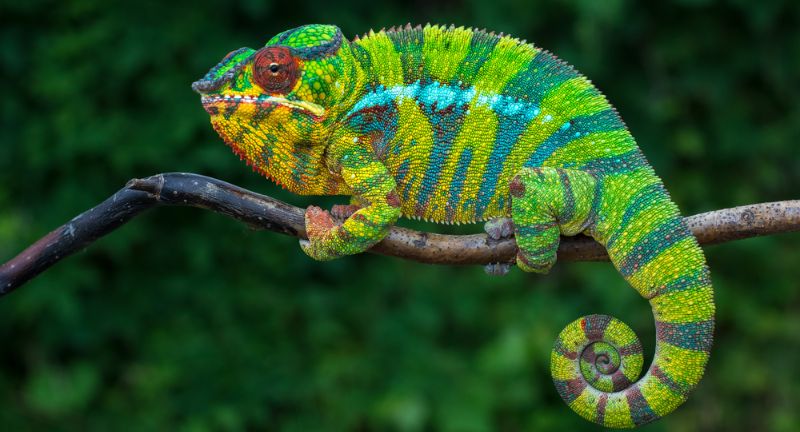
Shutterstock
Chameleons are fascinating reptiles known for their ability to change color, a trait that has made them one of the most intriguing animals on the planet. This color change is not just for camouflage, as commonly believed, but also for communication and temperature regulation. With their independently mobile eyes, chameleons can look in two different directions at once, giving them a significant advantage when hunting or avoiding predators. Their slow, deliberate movements, combined with their unique appearance, make chameleons a marvel of evolution.
Hummingbird

Shutterstock
Hummingbirds are tiny birds known for their incredible flying abilities, able to hover in mid-air thanks to the rapid flapping of their wings, which can beat up to 80 times per second. These birds are attracted to brightly colored flowers from which they feed on nectar, their fast metabolism requiring them to eat often. The iridescent plumage of hummingbirds catches the light, creating dazzling flashes of color that are a delight to observe. Their remarkable speed and agility, combined with their vivid colors, make hummingbirds one of the most fascinating bird species to watch.
Wolf
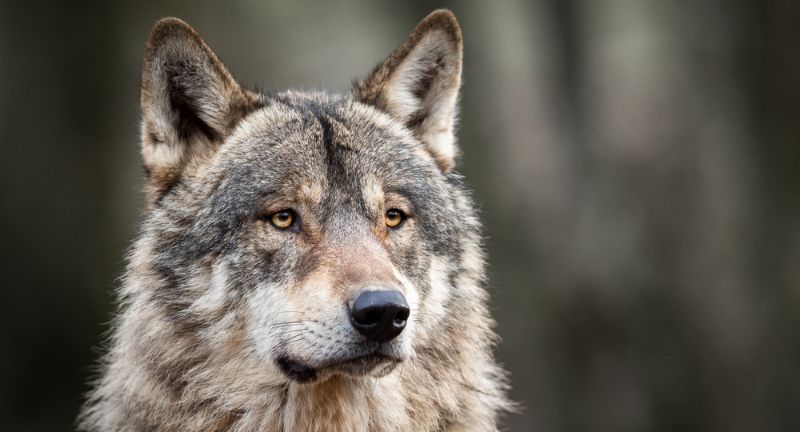
Shutterstock
Wolves are powerful and majestic creatures, embodying the wild spirit of the wilderness. Known for their social structure and pack behavior, wolves work together to hunt and care for their young. Their thick fur, which ranges in color from white to black, provides insulation against the cold in the rugged landscapes they often inhabit. The wolf’s keen intelligence, strong instincts, and the iconic howl that echoes through the wilderness make them a symbol of freedom and the natural world.
Dolphin
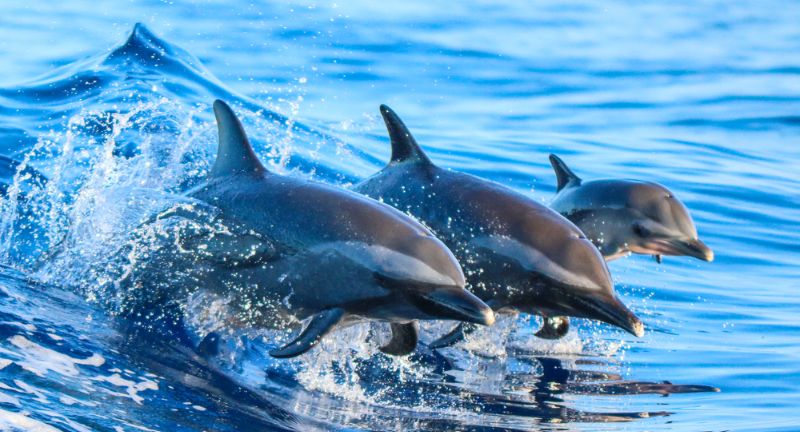
Shutterstock
Dolphins are highly intelligent marine mammals known for their playful nature and impressive acrobatic skills. They have a strong social structure and communicate with each other using a variety of clicks, whistles, and other sounds. Dolphins are known to exhibit behaviors that suggest a high level of intelligence, including problem-solving and the use of tools. Their sleek, streamlined bodies allow them to swim at high speeds, making them one of the ocean’s most efficient predators and a favorite among wildlife enthusiasts.
Giant Panda
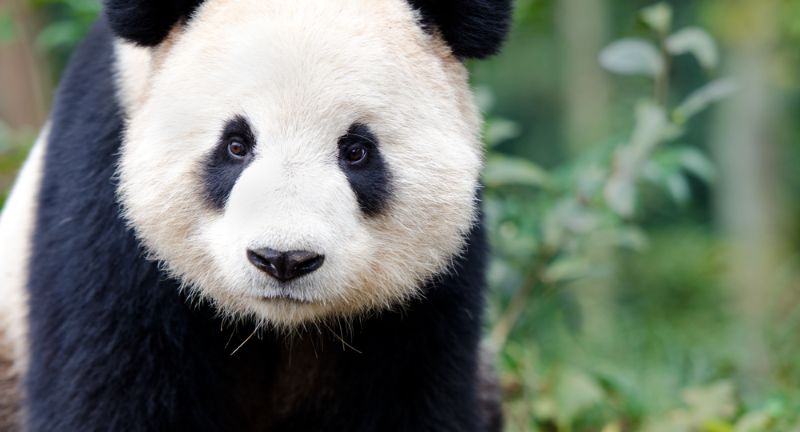
Shutterstock
The Giant Panda is an iconic symbol of conservation and one of the most beloved animals worldwide. With its distinctive black and white coloring, peaceful demeanor, and endearing face, the giant panda has captured the hearts of people around the globe. Native to the bamboo forests of China, these bears have a diet primarily consisting of bamboo, which makes up 99% of their intake. Despite their large size, giant pandas are skilled tree climbers and can also swim, showcasing their adaptability to their environment.
Sea Turtle
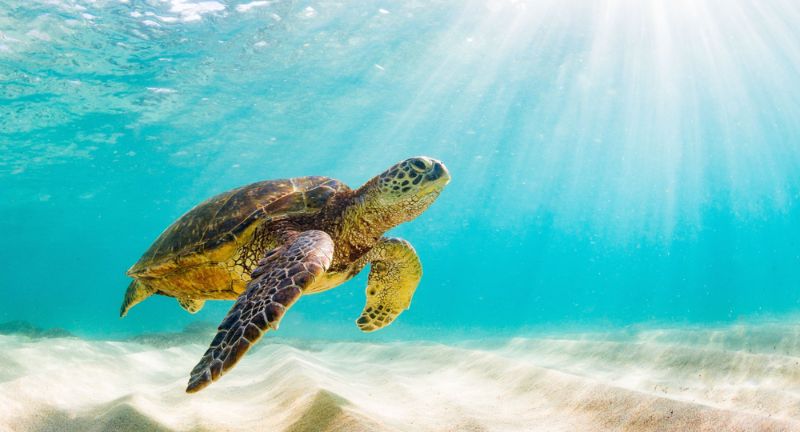
Shutterstock
Sea Turtles are ancient mariners, having navigated the world’s oceans for millions of years. These graceful creatures are known for their long lifespan, some species living up to 150 years. With their streamlined shells and powerful flippers, sea turtles glide effortlessly through the water, traveling thousands of miles during their migrations between feeding and nesting grounds. The serene beauty and resilience of sea turtles inspire conservation efforts worldwide, as they face threats from habitat loss, pollution, and climate change.
Arctic Fox

Shutterstock
The Arctic Fox is a small, incredibly resilient animal adapted to life in the harsh Arctic environment. Its fur changes color with the seasons, from white in winter to blend in with the snow, to brown or gray in summer for camouflage among the rocks and plants. This fox’s thick fur not only provides excellent insulation against the cold but also makes it one of the most endearing animals of the Arctic. Despite the extreme conditions of its habitat, the Arctic Fox is a skilled hunter and scavenger, demonstrating remarkable resilience and adaptability.
Flamingo
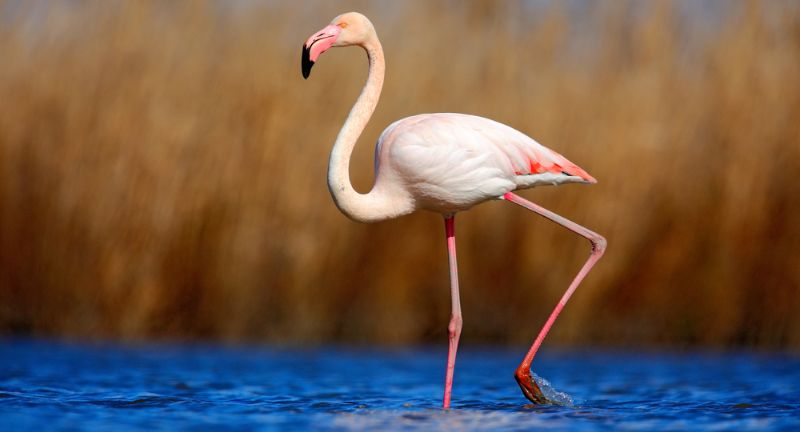
Shutterstock
Flamingos are social birds known for their striking pink feathers, which get their color from the carotenoid pigments in their diet of algae and crustaceans. These elegant birds can often be seen standing on one leg, a behavior thought to conserve body heat. Flamingos are also known for their highly synchronized group mating dances, which are a remarkable sight. The distinct coloration and communal behaviors of flamingos make them one of the most easily recognized and fascinating bird species.
Mandarin Duck
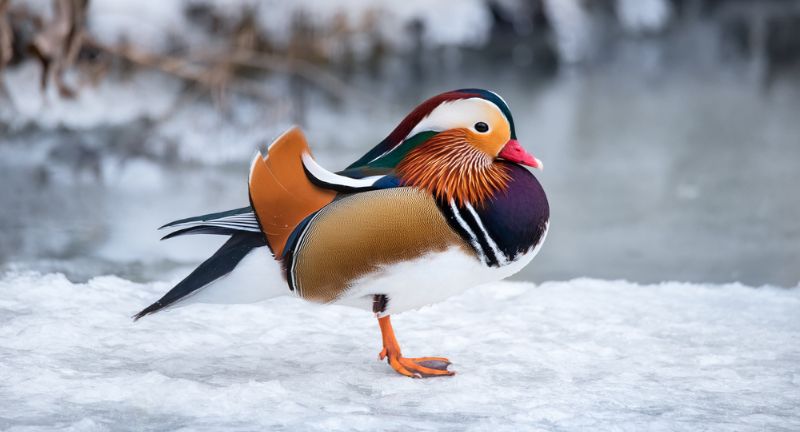
Shutterstock
The Mandarin Duck is celebrated for its extraordinary plumage and striking colors, making it one of the most beautiful ducks in the world. The male, in particular, displays a dazzling array of colors, with distinctive orange sails on its back, a red bill, and white crescent above the eye. Native to East Asia, these ducks have also been introduced in other parts of the world, where they inhabit lakes and rivers. The Mandarin Duck is a symbol of fidelity and affection in Chinese culture, often featured in art and literature.
Swan
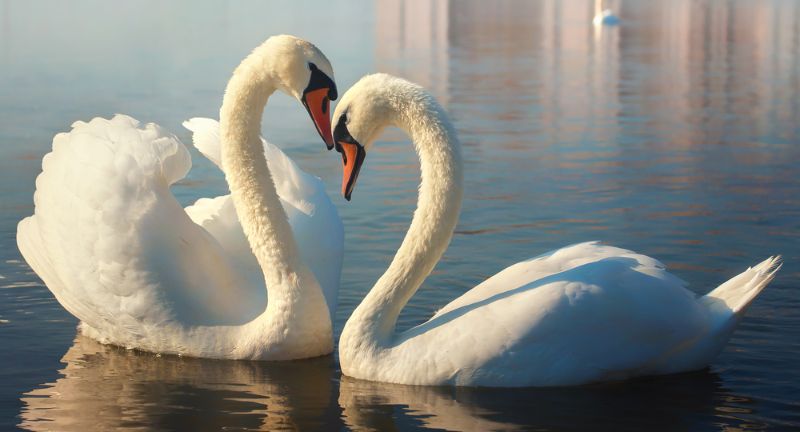
Shutterstock
Swans are synonymous with grace and beauty, often found gliding majestically on lakes and ponds. Their long necks and pure white feathers, in most species, make them a symbol of purity and elegance in many cultures around the world. Swans are monogamous birds, often forming bonds that last a lifetime, which adds to their romantic allure. Their presence in literature and mythology, symbolizing love, transformation, and beauty, underscores their profound impact on human culture.
Japanese Koi
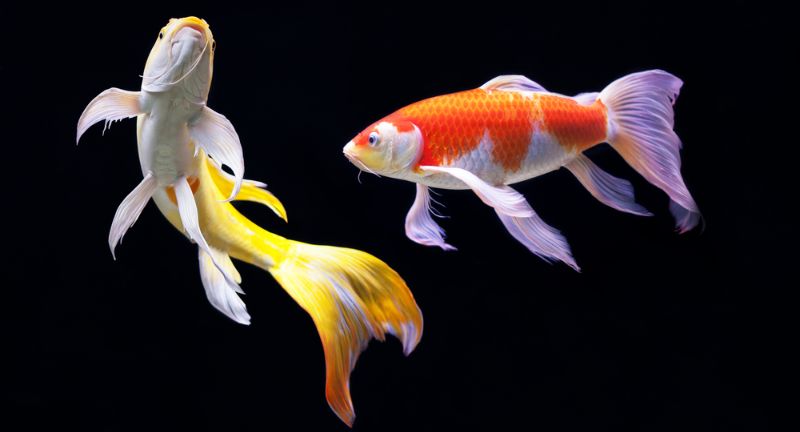
Shutterstock
Japanese Koi, or Nishikigoi, are ornamental varieties of domesticated common carp that are celebrated for their vibrant colors and elaborate patterns. These fish are a symbol of love and friendship in Japan, embodying qualities of good fortune, perseverance, and strength. Koi can come in a wide range of colors, including white, black, red, orange, yellow, blue, and cream. The tradition of breeding koi for their aesthetic qualities dates back centuries in Japan, and they are now admired in water gardens and ponds worldwide.
Cheetah

Shutterstock
The Cheetah is renowned for being the fastest land animal, capable of reaching speeds up to 75 mph in short bursts covering distances up to 1,500 ft, and has the ability to accelerate from 0 to 60 mph in just a few seconds. This big cat is instantly recognizable by its slender frame, deep chest, spotted coat, and distinctive black tear-like streaks on its face. Cheetahs are adapted for speed with long thin legs, a lightweight frame, and a long tail that helps maintain balance and steering during a chase. Despite their speed, cheetahs face significant threats from habitat loss, conflict with humans, and competition for prey with other large predators.
Orca

Shutterstock
Orcas, or killer whales, are one of the ocean’s most powerful predators, known for their striking black-and-white coloration and sophisticated hunting techniques. These intelligent marine mammals have a diverse diet, feeding on fish, seals, and even whales, using coordinated group strategies to capture their prey. Orcas are highly social creatures, living in matrilineal family groups with complex social structures and communication methods. Their ability to learn from each other and pass on knowledge across generations highlights their advanced cognitive abilities.
Lion

Shutterstock
The Lion, often called the “King of the Jungle,” is renowned for its majestic mane and powerful presence, symbolizing strength and courage across various cultures. As the only big cats that live in groups, called prides, lions exhibit social behavior unlike any other species of wild cat, with intricate roles that vary between hunting and caring for the pride. The male lion’s mane is not just for show; it serves as a sign of health and virility, making it a critical factor in attracting mates and deterring rivals. Lions play a crucial role in their ecosystem by controlling herbivore populations, maintaining a balance that helps sustain the savannah environment.
Jaguar

Shutterstock
The Jaguar is the largest cat in the Americas and the third-largest globally, known for its powerful build, beautiful rosette-patterned coat, and formidable hunting abilities. This apex predator is adept at swimming, making it unique among the big cats, and often hunts in and around water, preying on fish, turtles, and caimans. Jaguars have a significant cultural and spiritual importance in Central and South American cultures, symbolizing power and ferocity. Their solitary and elusive nature, combined with their role in maintaining the balance of their ecosystem, underscores the importance of conserving their natural habitats.
Golden Pheasant
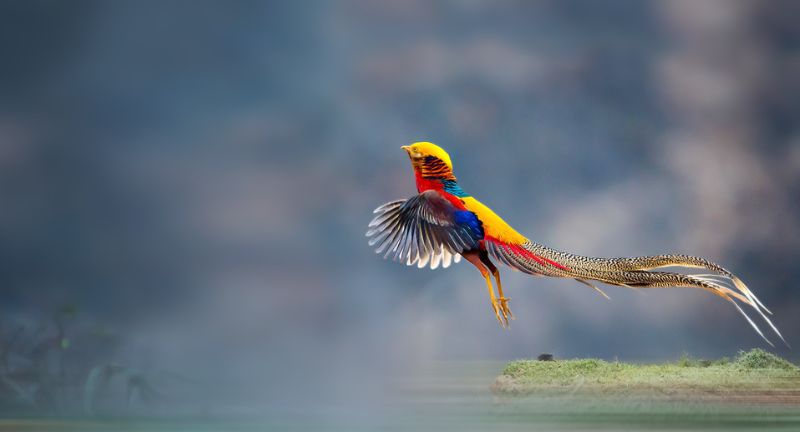
Shutterstock
The Golden Pheasant, or “Chinese Pheasant,” is known for its brilliant coloration and elongated, golden-yellow cape that covers the back of the head and neck. The male of the species displays an impressive array of colors in its plumage, including red, yellow, blue, and green, used to attract females during mating displays. Native to the forests of mountainous areas of western China, their beauty has made them popular among bird enthusiasts around the world. Despite their vibrant appearance, Golden Pheasants are quite elusive in their natural habitat, often preferring to run rather than fly when threatened.
Narwhal
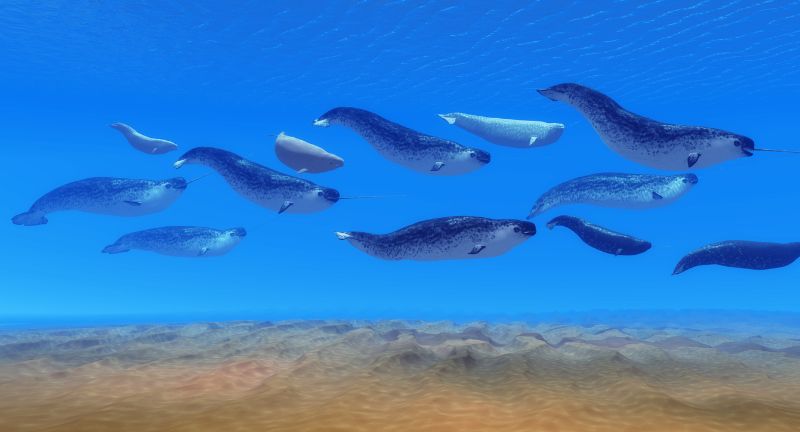
iStock
The Narwhal, often referred to as the “unicorn of the sea,” is a medium-sized toothed whale that possesses a large “tusk” from a protruding canine tooth. These mysterious creatures inhabit the cold waters of the Arctic around Greenland, Canada, and Russia. Narwhals are known for their deep dives, reaching depths of up to 1,500 meters to feed on fish, squid, and shrimp. The purpose of the narwhal’s tusk has been a subject of much speculation, but it is believed to play a role in mating rituals and establishing dominance hierarchies.
Glasswing Butterfly
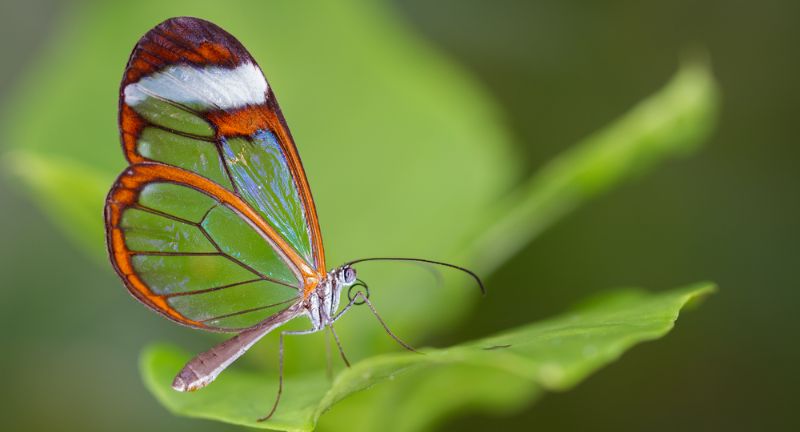
Shutterstock
The Glasswing Butterfly, known for its unique transparent wings that allow it to camouflage without extensive coloration, is a fascinating species found in Central and South America. The transparency of their wings is due to the lack of the colored scales found in other butterflies, making them almost invisible against a backdrop of foliage. These butterflies are not only remarkable for their appearance but also for their migratory habits, traveling long distances across continents. The Glasswing Butterfly’s delicate beauty and intriguing characteristics make it a subject of interest for both scientists and nature enthusiasts alike.
Giraffe

Shutterstock
The Giraffe is the tallest living terrestrial animal, renowned for its long neck and legs, which allow it to access leaves and buds in trees far beyond the reach of other herbivores. This unique adaptation provides them with a significant advantage in the savannas and woodlands of Africa where they reside. Giraffes have a distinctive coat pattern, with each individual’s spots being as unique as human fingerprints, aiding in camouflage and heat regulation. Their height not only assists in foraging but also in keeping a lookout for predators, making them a symbol of vision and elegance in the animal kingdom.
Axolotl
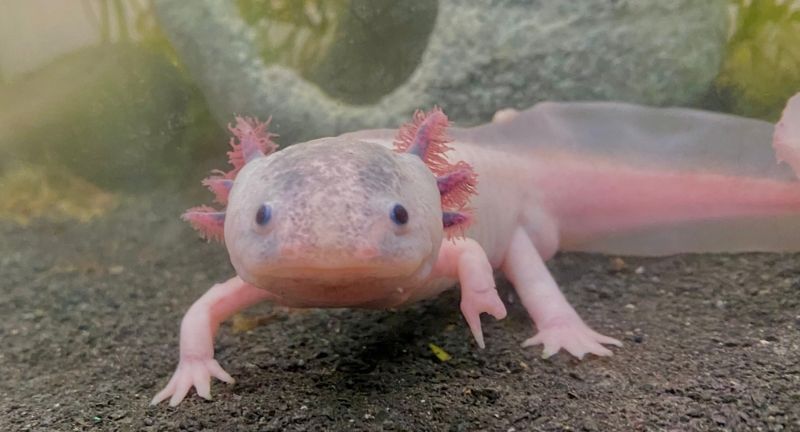
Shutterstock
The Axolotl, a unique species of salamander native to the lake complex of Xochimilco near Mexico City, is famous for its ability to regenerate limbs, spinal cord, heart, and other organs. Unlike most amphibians, axolotls spend their entire lives in water, exhibiting neoteny, meaning they retain their larval features into adulthood. With their fringed gill stalks and wide, endearing eyes, axolotls possess a distinct and captivating appearance. These fascinating creatures are critically endangered in the wild, emphasizing the need for conservation efforts to protect their natural habitat and ensure their survival.
Conclusion
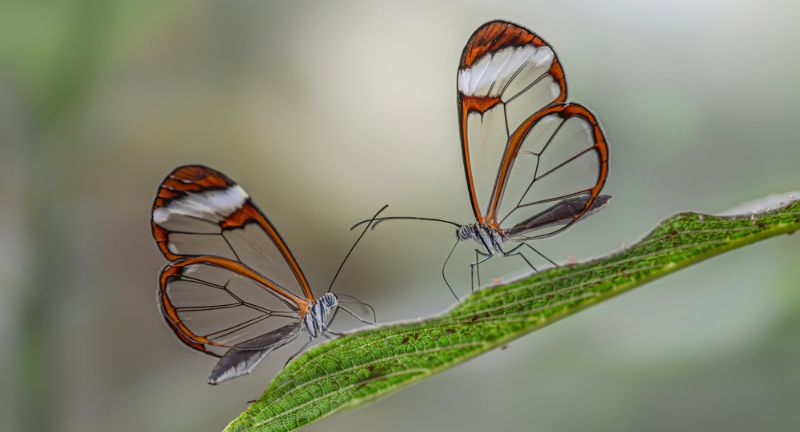
Shutterstock
As we conclude our journey through the captivating beauty of the animal kingdom, it’s clear that the diversity and splendor of these creatures enrich our planet in ways beyond imagination. Each animal, from the ethereal Glasswing Butterfly to the regal Giraffe, tells a unique story of adaptation, survival, and beauty. Their existence not only adds to the aesthetic richness of the natural world but also serves as a reminder of our responsibility to protect and preserve their habitats for future generations. Let us cherish and work towards sustaining this incredible biodiversity, which continues to inspire awe and wonder in the hearts of all who behold it.
More Amazing Animals+
-


Why Giraffes Are Actually So Scary
-
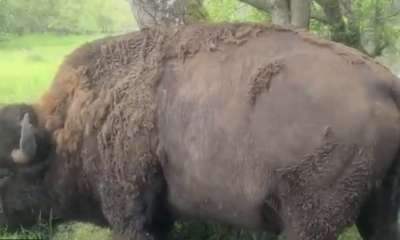

Bison bull caught scratching away the last bit of his…
-
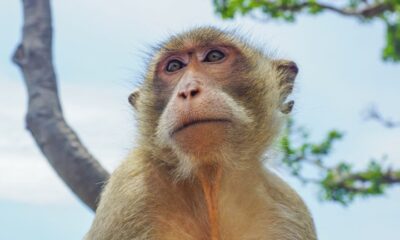

Life’s a Jungle: Uncovering the Most Fascinating Monkey Secrets
-


Alligator Crosses the Walkway with Bird Looking On in Hunstville,…
-


19 Bizarre Creatures That Seem Straight Out of a Dr.…
-


Secrets of the Squirrel Kingdom: 25 Amazing Facts
-
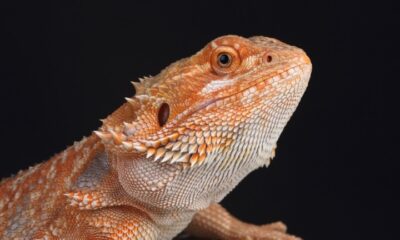

The Bearded Dragon: A Surprising Guide to Your New Favorite…
-


Beyond the Stripes: 25 Intriguing Zebra Facts That’ll Amaze You
-
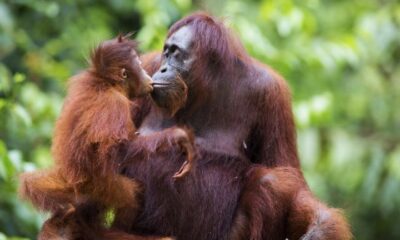

Motherhood in the Wild: From Overachievers to Epic Failures
-


Humpback whale breaching in Newfoundland, Canada
-
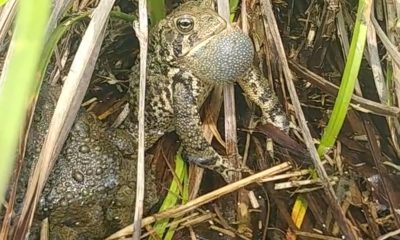

Who needs online dating when you could have a toads…
-
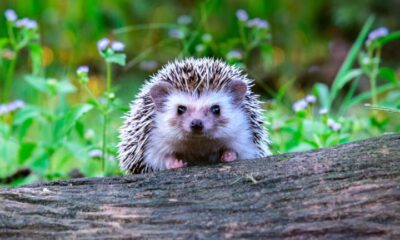

The Adorable World of Hedgehogs: 25 Things You Didn’t Know!
